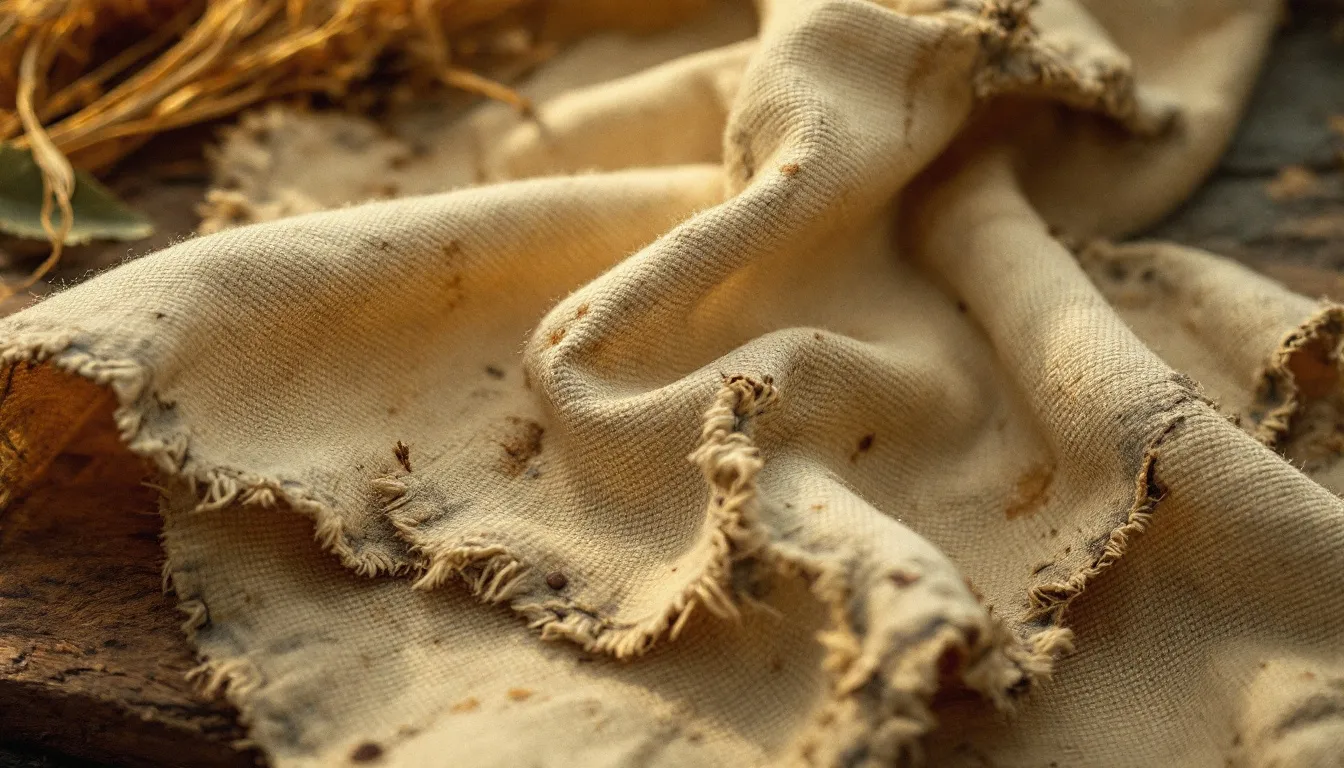The Ultimate Guide to Wax Canvas Material
Wax canvas material is a robust and water-resistant fabric, created by treating cotton canvas with wax. It’s valued for its durability, unique aesthetic, and versatility. The material has a textured, supple surface and feels drier compared to waxed cotton. This guide will delve into its history, manufacturing process, key features, various uses, and maintenance tips.
Key Takeaways
-
Waxed canvas is a durable, water-resistant material made from cotton canvas infused with paraffin or beeswax, creating a rugged aesthetic and enhancing longevity.
-
The history of waxed canvas dates back to early mariners and has evolved to serve both military and civilian applications, becoming a staple in outdoor gear and fashion.
-
Proper care, including gentle cleaning and regular re-waxing, is essential for maintaining the performance and appearance of waxed canvas items.
What is Wax Canvas?

Waxed canvas is not just any ordinary fabric; it is primarily made from cotton canvas that is infused with paraffin wax or beeswax, significantly enhancing its water-resistant properties. Unlike regular canvas, which may be untreated and less durable, waxed canvas fabric boasts a distinctive rugged appearance and improved longevity due to its wax treatment. This transformation results in a material that can withstand the elements while maintaining a stylishly worn look.
The process involves applying a layer of wax to the cotton canvas, which then hardens and seals the fabric’s mesh spaces. This not only increases the water resistance of the canvas but also helps it maintain its shape and resist wear over time. The texture of waxed canvas offers a tactile experience that synthetic materials simply cannot match.
The waterproofing achieved through waxing is integral to the fabric’s performance. Impregnating the cotton with paraffin-based wax gives the material a unique texture and enhanced durability. This quality makes waxed fabric and waxed canvas ideal for items that need to endure harsh conditions, aging gracefully and developing a unique patina over time.
History of Waxed Canvas
The origins of waxed canvas can be traced back to early mariners who used linseed oil on canvas garments to create waterproof clothing. This innovative approach laid the groundwork for the development of waxed fabrics. Over time, this material evolved to serve various roles in both civilian and military applications. The late 19th century marked the beginning of waxed canvas as we know it, particularly valued for its water-resistant qualities.
Established in 1880, British Millerain played a crucial role in the history of waxed canvas. Known for producing high-quality fabrics, they developed waxed canvas for military purposes, significantly impacting its adoption and evolution. During World War II, waxed canvas was utilized by the U.S. Army’s Tenth Mountain Division for its durability in extreme weather conditions.
The historical significance of waxed canvas goes beyond its practical uses. From its maritime roots, it has become essential for outdoor gear and fashion. The material’s ability to offer effective wind resistance when wet made it indispensable for sailors and soldiers alike. Today, waxed canvas continues to be a staple in both civilian and military applications, revered for its robust functionality and timeless aesthetic.
How Waxed Canvas is Made
The creation of waxed canvas begins with soaking cotton canvas in wax, typically paraffin-based, although natural options like beeswax are also used despite being pricier. This process makes the fabric water-resistant by sealing its mesh spaces with hardened wax. Hybrid waxes, blending paraffin and fluorocarbon, are sometimes utilized to enhance the waterproofing capabilities of the canvas.
The quality and durability of waxed canvas are significantly influenced by the thickness of the yarn and the density of the weave. A thicker weave results in a stronger, more tear-resistant fabric. However, it’s advisable to test the waxing effect on the fabric before committing fully, as some materials may not hold the wax well or could change color during the process.
The process of saturating the canvas with wax contributes to the higher cost of waxed canvas compared to regular canvas. This investment in quality ensures that the final product is both durable and effective in various conditions. Knowing how waxed canvas is made provides insight into why this material is valued for its performance and longevity.
Key Features of Waxed Canvas

One of the standout features of waxed canvas is its strong water resistance, making it suitable for various outdoor activities. Reviews frequently highlight the fabric’s ability to repel water, allowing droplets to bead and run off its surface. This water-resistant quality is a significant advantage for anyone looking to use waxed canvas for outdoor gear.
Durability is another standout feature, often noted for its ability to withstand harsh weather and daily wear. Proper care of waxed canvas items can enhance this durability even further, ensuring they remain functional and effective over time. Unlike regular fabrics, waxed canvas requires minimal cleaning and should never be machine washed or dry cleaned to maintain its wax coating.
An additional benefit of waxed canvas is its eco-friendliness. Made from natural materials, it can decompose after disposal, making it a sustainable choice. Its vintage charm further enhances its appeal, making it a great fabric for those seeking both performance and environmental responsibility in their materials.
Uses of Waxed Canvas

The use of waxed canvas has a rich history, dating back to its application in durable and weather-resistant military apparel during the Second World War. Its practicality and durability made it a favorite among soldiers needing reliable gear, including army duck fabric. This historical use laid the foundation for its popularity in the 20th century, particularly for outdoor activities.
Today, waxed canvas fabric is favored for its combination of style and practicality. It’s a popular choice for outdoor clothing items such as jackets and hats, where its waterproof qualities provide comfort and protection. The material’s versatility extends to bags such as messenger bags, totes, and duffle bags, making it a multifunctional fabric that suits various needs.
When selecting waxed canvas for items like bags or jackets, it’s important to consider the level of water resistance required. Waxing after construction can sometimes leave seams less waterproof, so it’s crucial to plan accordingly. This attention to detail ensures that waxed canvas items remain both functional and stylish, no matter the application.
Caring for Your Waxed Canvas
Maintaining the longevity and effectiveness of your waxed canvas items requires proper care. This involves two main aspects: cleaning and re-waxing.
Following the right steps ensures your high-quality waxed canvas continues to perform and look its best.
Cleaning Tips
Cleaning waxed canvas requires a gentle touch. Start by removing any dirt with a damp cloth to avoid compromising the wax and oil integrity of the fabric. Spot cleaning with a damp cloth is usually sufficient for minor dirt. If you encounter tougher stains, a dry scrub brush can help loosen debris before using a gentle saddle soap solution.
To remove stubborn oil stains, apply cornstarch and let it sit for 48 hours to absorb the oil. Using a stiff brush to remove dirt, followed by a damp cloth, is an effective method for maintaining the appearance of waxed canvas. Avoid using harsh soaps or machine washing, as these can damage the wax coating and reduce the fabric’s effectiveness.
Re-Waxing Guide
Re-waxing is a crucial step to keep your waxed canvas items water-resistant and looking their best. It is advisable to re-apply a layer of wax every 6 to 12 months, depending on usage. Regular re-waxing helps replenish the protective layer, especially in high-wear areas like seams where the wax may appear thin.
Re-wax by applying melted wax in circular motions and use a hair dryer to evenly distribute it. Allow the waxed canvas to cure for at least 24 hours in a warm, dry area after re-waxing. This process maintains your waxed canvas’s water resistance and helps develop a beautiful patina over time.
Advantages and Disadvantages
Waxed canvas offers several advantages, including high durability and excellent water resistance. These qualities make it suitable for heavy use over time, with water droplets beading and running off its surface. Additionally, waxed canvas develops a unique patina over time, adding character and a personalized touch to each item. Marks and scuffs on waxed canvas add to its character and do not easily stain.
However, there are some disadvantages to consider. While waxed canvas is water-resistant, it can become saturated if immersed in water for extended periods. The wax coating limits breathability, making it less suitable for applications requiring ventilation. Furthermore, waxed canvas requires occasional re-waxing to maintain its water resistance and appearance.
Despite these drawbacks, many users appreciate the material’s durability and aesthetic appeal.
Comparing Waxed Canvas with Other Materials
Comparing waxed canvas to regular canvas, nylon, and leather highlights why it’s a preferred choice for many. Waxed canvas typically has a much thicker weave than regular canvas, resulting in greater strength and resistance to tearing. This makes it an excellent option for projects requiring durability and water resistance. While it cannot match Cordura in terms of strength and water resistance, waxed canvas is more pleasing to handle.
Compared to nylon and leather, waxed canvas offers a unique balance. Nylon is durable but lacks the natural look and feel of waxed canvas, while leather, though stylish, is not as water-resistant as waxed canvas.
For various sewing projects, a 9oz canvas weight is commonly preferred for its ease of handling, while heavier options like 12oz offer more durability. This balance of features makes waxed canvas a versatile material for a range of applications.
Choosing the Right Weight and Shade
Selecting the right weight of waxed canvas ensures the durability and functionality of your items. Heavier weights provide more durability, making them suitable for items like bags and jackets that require extra strength. Lighter weights, on the other hand, are easier to handle and are ideal for smaller projects or items that do not need as much durability.
Traditionally available in brown tones that mimic leather, waxed canvas is popular for outdoor gear and accessories. These shades not only provide a classic look but also help in maintaining the material’s rugged aesthetic. Choosing the right shade and weight makes your waxed canvas items both functional and stylish.
Customer Testimonials
Customer testimonials often highlight the unique qualities of waxed canvas. For instance, Rogue Territory’s Supply Jacket gained popularity for its association with high-profile media, being worn by James Bond in the film ‘No Time To Die’. This association underscores the fabric’s appeal in both functionality and style.
Many customers appreciate the unique patina that develops over time, adding character to their projects. This natural aging process sets waxed canvas apart from synthetic materials, making each piece uniquely yours.
Users’ positive feedback emphasizes the material’s durability, aesthetic appeal, and overall quality.
Summary
In summary, waxed canvas stands out due to its rich history, exceptional durability, and unique aesthetic. From its origins with early mariners to its significant role in military applications, waxed canvas has proven its worth over the centuries. Today, it remains a popular choice for outdoor gear, fashion, and various other practical uses.
Understanding how waxed canvas is made, including the waxing process and the factors that influence its quality, helps appreciate why this material is highly valued. The key features, such as water resistance and eco-friendliness, make it a practical and sustainable choice for many applications. Proper care, through careful cleaning and regular re-waxing, ensures that waxed canvas items maintain their functionality and continue to develop a beautiful patina over time.
Ultimately, waxed canvas offers a unique combination of style, practicality, and durability. Whether you’re crafting a new project or looking for a reliable material for outdoor gear, waxed canvas is a worthy investment. Its timeless appeal and robust performance make it a staple that will serve you well for years to come.
Frequently Asked Questions
What is canvas fabric primarily made from?
Canvas fabric is primarily made from cotton or linen. These materials provide durability and strength, making canvas suitable for various applications.
What is the origin of the term "canvas"?
The term "canvas" originates from the Latin word "cannabis," which signifies that it is made from hemp. This etymology highlights the material's historical connection to the fibers derived from the cannabis plant.
How is waxed canvas made water-resistant?
Waxed canvas achieves water resistance through the application of beeswax or paraffin wax, which hardens to seal the fabric's mesh spaces. This process effectively minimizes water penetration, ensuring durability and protection against the elements.
How often should you re-wax a waxed canvas?
Re-waxing a waxed canvas every 6 to 12 months is recommended, depending on how frequently it is used. Regular maintenance ensures optimal water resistance and longevity.
How can wrinkles and small marks on waxed canvas be removed?
To effectively remove wrinkles and small marks from waxed canvas, gently heat the area with a hair dryer while rubbing the surface with a soft, lint-free cloth. This method restores the canvas's appearance without causing damage.

![HuaChen Waterproof Retro Backpack Review [Is this bad boy for you?]](http://huachenbag.com/cdn/shop/articles/7b3928ce-883b-4082-80c8-4fa429e96732.jpg?v=1743473862&width=1)

